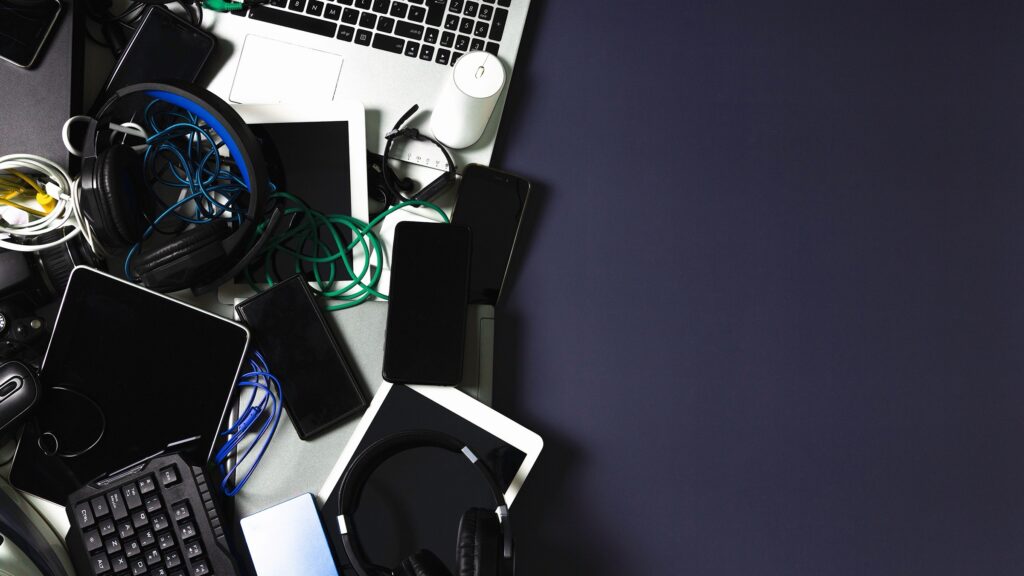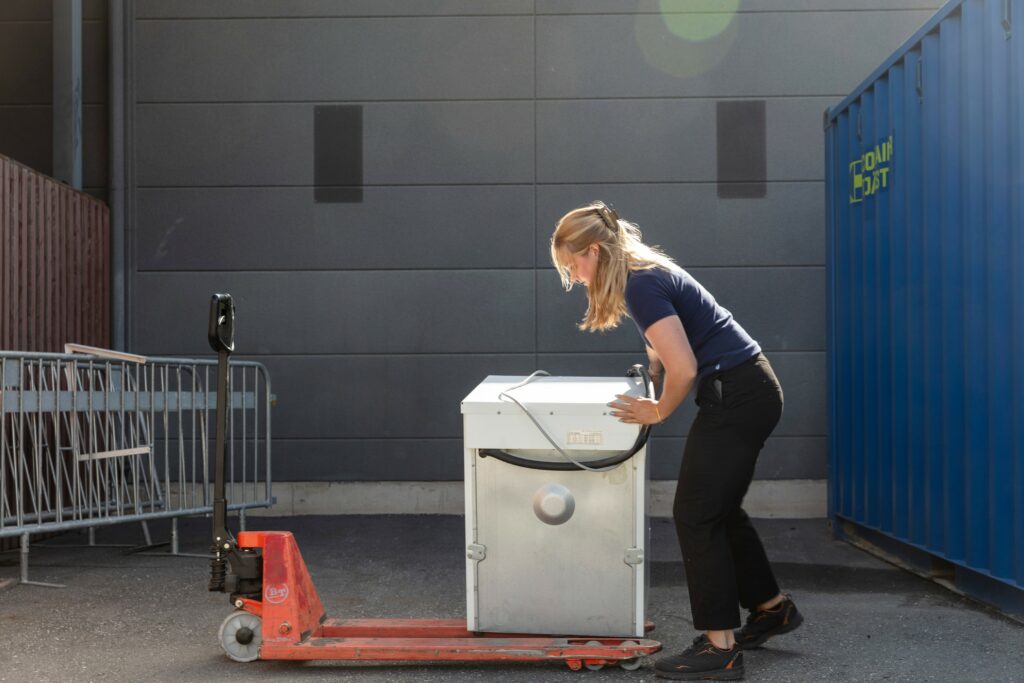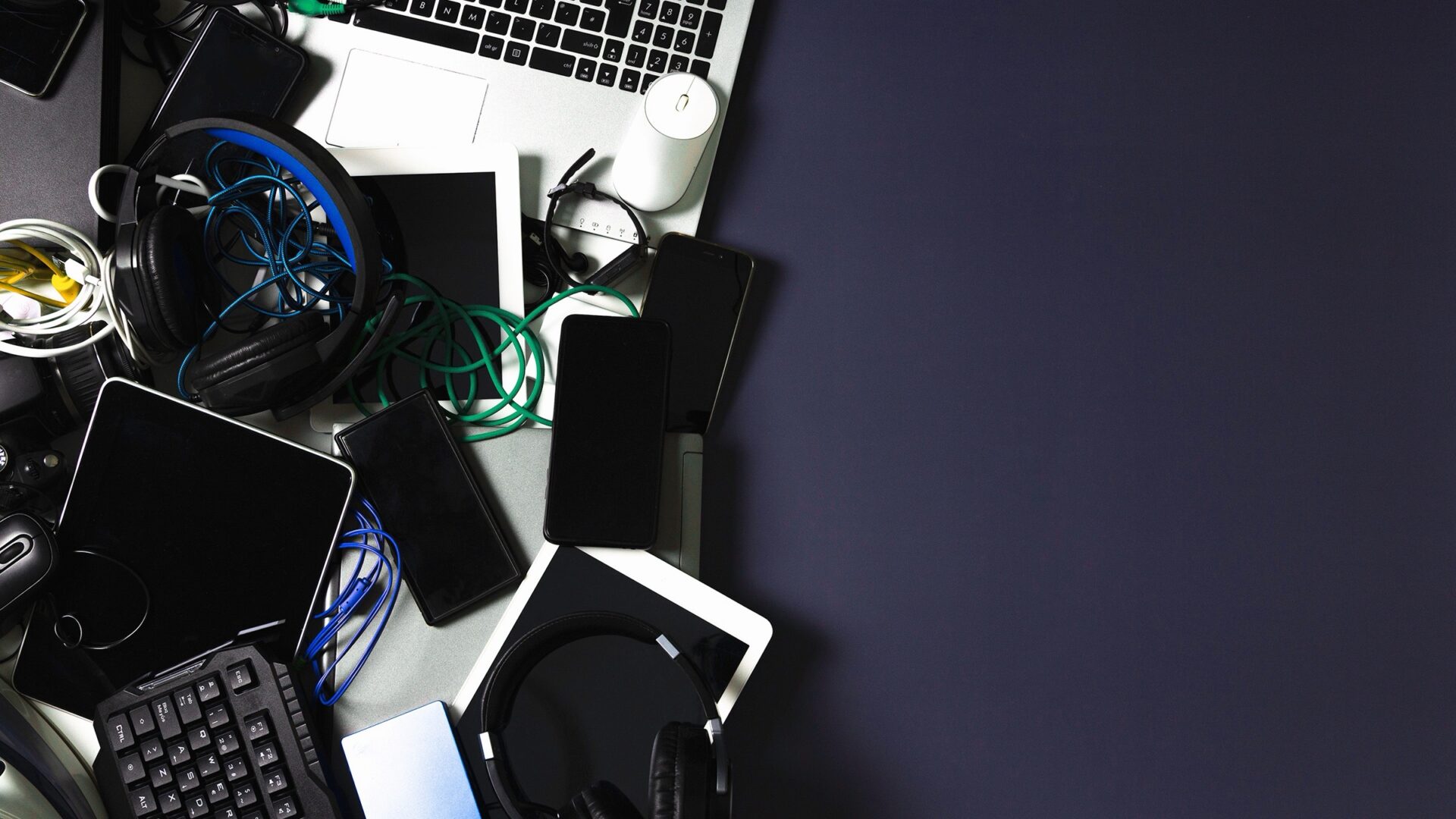Producer Responsibility for Electronics
Do you need help taking on your producer responsibility for electronics? Contact us at Recipo and we will help you to easily achieve the requirements!

Let’s Explore
Did you know that if you produce and sell electronics in the Danish market, you are legally obligated to contribute to the collection and recycling of electronics? The Producer Responsibility for Electronics Act was introduced in 2005 with the aim of creating a more sustainable circular economy.
At Recipo, we understand that it can be time-consuming to grips what producer responsibility means. Therefore, we have gathered all the information you need to easily understand your obligations as an electronics producer.
What are your Obligations as an Electronics Producer
As an electronics producer, you need to know exactly how to meet the legal requirements that come with producer responsibility. To make it easy for you, we have summarized everything in a list.
If you want more information on how to get started and take on your producer responsibility, you can join Recipo’s collection system.
A producer must:
- Register with a nationally approved collection system to ensure that products are recycled according to recycling goals. Recipo is an example of such a system.
- Register as a producer with the Environmental Protection Agency in the country where the products are sold (The Danish DPA handles this in Denmark).
- Report sales and treatment of electronics to the Environmental Protection Agency or responsible authority in the country where the products are sold. (Recipo handles this through our reporting portal).
- Accept used electronics in stores for reuse or recycling.
- Promote product reuse whenever possible.
- Inform consumers on how to handle electronic waste and how to securely erase personal information from equipment.
What Electronics are Covered by Producer Responsibility?
The Danish DPA system has divided the electronics covered into seven different categories. Here we list them all, including some examples of each category.
- Temperature Exchange Equipment (such as refrigerators, freezers, and air conditioners)
- Screens, Monitors, and Equipment Containing Screens with a Surface Greater than 100 cm² (including TVs, laptops, and computer screens)
- Light Sources (such as fluorescent tubes and halogen lamps)
- Large Equipment (over 50 cm deep, wide, or long, including musical instruments, dishwashers, and printers)
- Small Equipment (under 50 cm deep, wide, or long) that doesn’t fall into categories 1, 2, 3, or 6, examples: microwave ovens, smoke alarms, toasters)
- Small IT and Telecommunication Equipment (such as mobile phones, telephones, and GPS devices)
- Photovoltaic Panels

The Difference between Consumer Equipment Management and Professional Electrical Equipment
Electrical equipment is also divided into two other categories, consumer electrical equipment and professional electrical equipment. There is a certain difference when it comes to the management of waste within the two categories that you need to keep track of.
Consumer Equipment
This category includes electrical devices typically used in households, like laptops and TVs. Even if purchased by a business, they still fall under consumer equipment. When it comes to handling electronic waste in this category, it must be collected and managed by a producer responsibility organization (PRO) approved by the Danish DPA, such as Recipo.
Professional Electrical Equipment
This refers to electronics not commonly used in households. Examples include X-ray machines, kitchen equipment for restaurants, and cash registers. Unlike consumer equipment, professional electrical equipment doesn’t need to be collected by an approved producer responsibility organization. However, as a producer of such electronics, you still need to ensure proper disposal and contribute to achieving environmental goals.
Reporting Obligations for all Producers
Regardless of the volume of sales, all electronics producers must report to the DPA system. If you join Recipo’s collection system, you can report your production or sales to us, and we’ll handle communication with the DPA on your behalf.
Electronics with Built-in Batteries
If you sell electronics with built-in batteries, be aware that you have dual responsibility: for electronics and for batteries. You must comply with requirements from both regulations. Also, clearly specify in the user manual the type of batteries used, how to remove them, and how to recycle them.
Frequently Asked Questions
How do you sort electronics?
Electronics must not be disposed of in ordinary household waste, precisely because they may contain materials that are hazardous to health and the environment. The easiest is to take it to a recycling station or to a store that sells similar products.
Is electronic scrap hazardous waste?
Yes, electronic scrap is classified as hazardous waste in most cases and should therefore always be handed in at recycling centers or electronics stores where they can be sent on to be recycled correctly in an environmentally correct way.
What happens if you throw it wrong?
Throwing garbage and waste in the wrong bin or container is not a crime. If you dispose of your garbage incorrectly in a garbage room that is connected to an apartment building, the association or the landlord can be fined, which will lead to increased rents.
